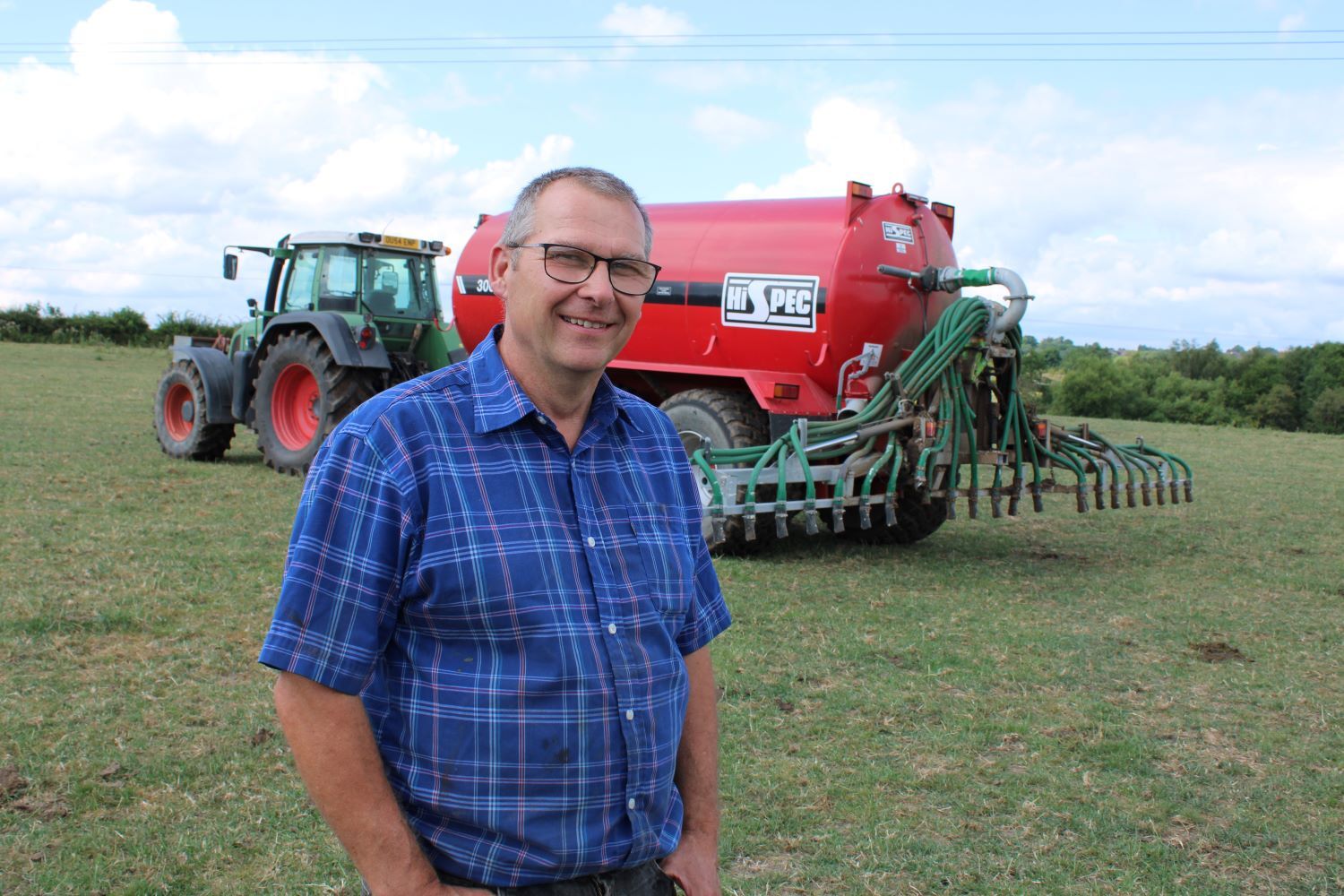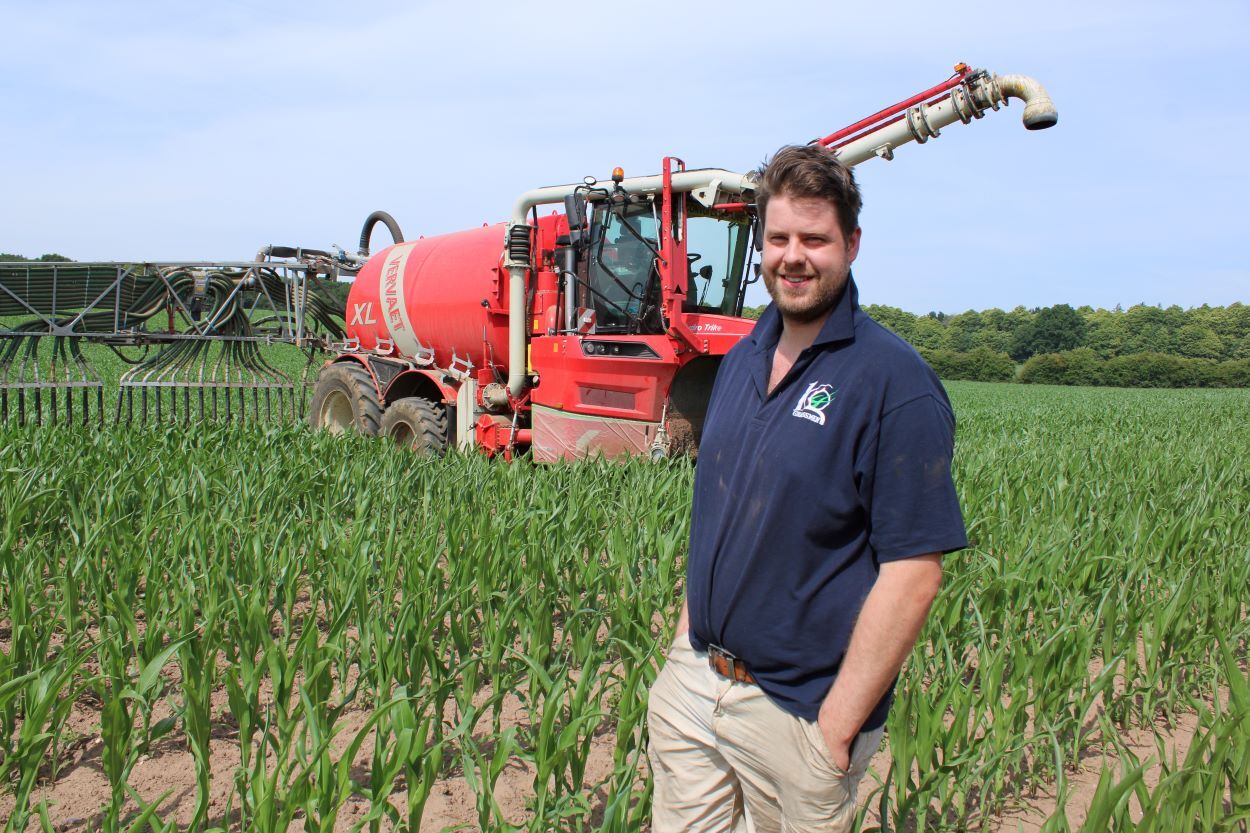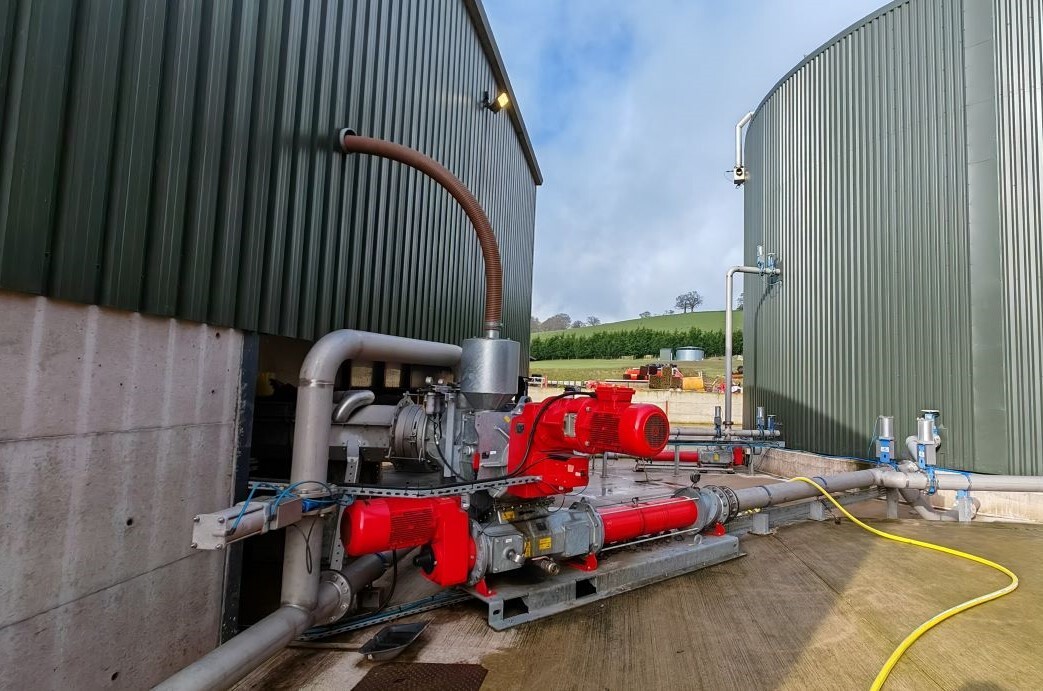Slurry challenge for drought stricken NVZ farm

Robert Payne invested in a Vogelsang dribble bar, five years ago, to better manage slurry application on his Nutrient Vulnerable Zone (NVZ) classified farm. The move has brought greater flexibility and control of forage management, but, in one of the driest years on record, he has struggled to utilise slurry and cut enough grass to feed his dairy herd.
Milking 100 Friesians and pedigree Ayrshires, Mr Payne manages 325 acres of owned and tenanted land near Derby. He farms in partnership with his father Bob, who started Thackerbarn Farm in 1967.
“My father took on the land when it was made available after mining in the area finished. The soil was poor, and it has taken years to replenish it into good grassland. It is largely heavy clay so the herd has to come in early in October and often can’t graze again until April,” says Mr Payne.

Better use of slurry
The farm was declared part of a NVZ, which prevents him from applying slurry between October and February. This was a challenge when the farm used contractors, so he decided to buy the Vogelsang 7.5m UniSpread as a way to make better use of slurry.
“Contractors would come when it suited them and just dump as much as they could and as quickly as they could, which wasn’t ideal for the land and became tricky with the shorter window inflicted on us by the NVZ.
By taking control ourselves, we have been able to improve soil health and grow better grass for the herd,” he says.
He applies 3,000 gallons per acre with the dribble bar mounted to a tanker. He was fortunate to benefit from a grant for the dribble bar which provided 50 per cent of the cost. He suggests the pipes work well and are better than a trailing shoe option for his land.

Dry conditions
Whilst the system has worked well in recent years, the dry conditions of 2025 have thrown up a new problem.
“We have never seen it as dry as this and we have found that applying the slurry in hot conditions on to baked land leaves a thick line of dry matter and the nutrients from the liquid dry up rather than soak into the soil,” he says.
The effect of applying the slurry in the heat has suffocated the soil, and the grass, rather than providing valuable nutrients. Sitting on top, it is also a contamination concern, so Mr Payne is considering a slurry separator.
“Years ago we built a weeping wall in an attempt to separate some of the liquid from the solids and make our lagoon more homogeneous. However, with technology moving on and grants available, it would be beneficial to the farm to install a separator to do this more efficiently,” he says.

Worthwhile move
Robert attended a Vogelsang open farm event to see an XSplit separator in action and came away thinking it could be the answer.
“It is yet another investment, at a time when things are tight. However, I think it would be a worthwhile move to better manage our slurry,” he adds.
As part of an SFI scheme he has had all the land soil tested and established that his pH is spot on for growing grass, at 6.5. This data was used to create a nutrient management plan and the farm has, since, used very little bought-in fertiliser.
“When we first came here, the land was deficient in phosphorus and potash, but over the years we have improved it and, now we are in control of applying slurry, we are keen to get the most out of it and we have reduced our fertiliser bill by 75 per cent,” he says.
He suggests that by separating his slurry, more N, P and K could be absorbed from the liquid fraction because it will incorporate into the soil more easily. He could then use the solid as a top dressing.
“Thankfully we have a 45-metre square lagoon so we have ample storage, but in previous years, when we have had prolonged heavy rain and the lagoon has filled up more than expected. So, having a separator would alleviate this too,” he says.

Weather windows
The farm has always managed its own silage provision and, with two clamps, Mr Payne takes three cuts a year which normally fill them both.
“This year has been one of the worst for forage. First cut didn’t even fill one clamp and we have been forced to feed a quarter of it already. Second cut is not looking good so all we can hope for is some rain in August and September to take a third cut that might get us through winter,” he says.
He suggests that, overall, his silage provision is only a third of what he would want it to be in July and, despite every effort to encourage growth, without rain the grass has struggled.
“We have applied slurry, and even fertiliser, in the hope that it will stimulate growth, but without rain it simply isn’t moving. The slurry has not incorporated the way it would normally because, despite the macerator on the dribble bar, it is still too thick. The small amount of fertiliser we used as an experiment also hasn’t had any effect,” he says.
Unwilling to despair, he has held back on slurry application to make better use of it in the windows following rain.
“Normally we are struggling to apply because of the rain. This year, we are looking for weather windows following rain to apply on to moistened ground. I think a separator would help with this because a more homogenous liquid would be incorporated faster and wouldn’t bake in the heat,” he says.

Still optimistic
Extreme weather, being in an NVZ, and balancing the need for investment with milk prices has caused him to evaluate the whole farm system, but even in a difficult year he is still optimistic that the farm can prevail.
“When everything seems stacked against us, we are still making the best use of what we have. Slurry is not a waste product, it is free fertiliser and we are trying to make best use of it to grow the grass our cows need. However, for the first time in years we are praying for rain to help the situation and enable us to fill the clamps before the cows come in,” he concludes.
Learn more about the UniSpread

